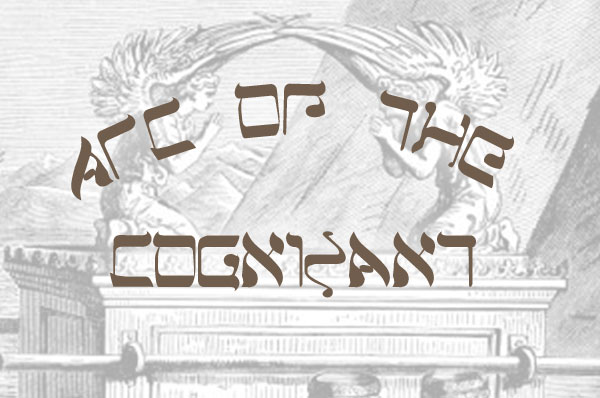Twilights and High Noons in World History
“The unhistoric peoples of Europe are consigned to the dustbin of history.”
— Friedrich Engels
This column is my response to the “migrant crisis” in Europe; I try to provide some context for what is happening there now.
A Grand Narrative of Human History
People today do not read Arnold Toynbee’s A Study of History. It is understandable that this is so, since Toynbee’s argument for a discernible pattern or shape in human history was thoroughly discredited by his peers, the community of scholars in history around the world.
But it is still entertaining to read some parts of that grand opus, 12 volumes in all, where Toynbee tries to convince readers of an essential repetition in the history of civilizations, a cycle of birth, rise, troubles, renewal, unresolved challenges, decadence, and death.
The focus of Toynbee’s grand study was a “civilization” and he was quite confident he knew what that word means, in the way Kenneth Clark is confident he knows it too, in Clark’s BBC documentary called “Civilization.” Of course there have been peoples and places on the globe whose way of life have not been baptized with the respectable noun “civilization.”
Today, articulate critics of our history-writing tradition, such as Charles Eisenstein, have made a strong case that we must stop believing in Progress and stop telling a narrative of marching to global unity brought about by Europe. He has peers in the art of crafting a grand new narrative, or “Story of the People,” writers like Brian Swimme and Wm. I. Thompson. The key idea of a new consensus story is, that the stories we tell ourselves must transform human consciousness, and from that transformation issues the solutions to present challenges.
Seeking to understand the present moment by looking back to history is a habit of our species, and writing history to exalt one’s own people and to slight others, is another such habit. Like many human habits, these have reached the end of their usefulness and may have become positively counterproductive for the needs of this epoch.
Is there a mainstream of history?
From the time of Columbus and Queen Elizabeth I, the main thrust of writing history in Europe put great emphasis on the rise of Christendom’s naval power over the oceans of the world, over Islam in the middle east, and over the commerce of the world’s seas. The Scientific Revolution in European civilization marked the ascendancy of a new scientific mind in the ruling elites of Europe, and this consciousness was applied to the invention of naval and military tools that accelerated the power of Europe over its near-eastern neighbours in Asia, and then to the conquest of natives in the New World, Africa, and further Asia. By the late nineteenth century, Europe’s conquests by land of foreign empires such as the Aztecs and Incans of the New World, and empires in Africa and India, were celebrated habitually in books and journals by white historians.
Not only the material and technology for war benefitted from application of European science; economic power accompanied and founded the emergent power of the Spanish, then the Dutch, the English and the French. Capitalism evolved, from merchant practices as old as the Roman Empire to new forms of agrarian, industrial, and finance capital.
Ideologies of the racial and national character of Europeans were articulated, and theories of politics were born in revolutions in the U.K., France, and the USA. Europe, plus America, ruled the globe by the time of WWI, at the high noon of European civilization. Not until the 1980’s did its economic dominance begin to fade.
That story, outlined above, is what the “mainstream” of world history was supposed to be in the history-writing of the West. But it is widely recognized by historians now that to continue to write history in this way is inadequate to the needs of this present time, when the planet has one global economy and political superstructure — and we are all threatened by climate change and economic deterioration.
Do only winners write the history books?
It is a simple truism that the winners of wars, and of struggles for dominance in the economic sphere, will impose their version of “progress” upon the history books read by majorities. The victors have the material and political power to make their perspective dominant. They will propagate their views in the schools, the public media, in news stories, and in institutions that they use to keep the losers in a position of weakness.
But no victor has ever remained eternally dominant after any war or non-violent contest. Victors grow weaker and losers stronger due to vicissitudes no government or military can control perpetually. A new war or economic contest produces a new constellation of power.
This is precisely what has happened to the once-indisputable global dominance of the West. The economics of European capitalism have made the West stronger than any other civilization for a few centuries, but the tide turned. During the zenith of our power, the West’s imperial governments created institutions like the UN, World Bank, International Monetary Fund, World Court and International Law Codes. Now these bodies are not entirely at the command of merely Western nations and leaders.
China, India, South Africa, Brazil, South Korea, Mexico, Iran, Saudi Arabia, Turkey: these are nations with some economic weight today, none of them originating under the exclusive umbrella of Euro-American civilization (the lands of old “Christendom”). The writing is on the wall for the West: we do not direct world history in 2015 as we did in 1900 or 1950.
The USA, the only super-power, still aims for “full-spectrum dominance” in its military doctrine, according to some sources. But the US cannot carry the burden of this status unless its economic power is unshaken, and it has been shaking ever since 2008. (Or since 1973, if one looks at the effects of the first oil crisis; however, the collapse of the old Soviet empire gave America a last-chance decade of world leadership.)
Do losers matter? New World Aboriginals, Ancient Celts, Africans
As examples of people who were once marginalized in history books but are now on an ascending trajectory, I would cite the Celts and the First Nations of the New World, and Africans in general. These were once “loser peoples.” Today, they are no longer treated as negligible.
The trendiness of Celtic civilization in the rich nations of the West over the last two decades is unmistakable in our culture; their arts, music, and the Celtic lands themselves – Ireland, Wales, Scotland, Cornwall, Brittany – have attracted enormous attention and respect from younger generations. The classical Greeks and Romans began the tradition of scant respect for the Celts, who were fearsome in battle, yet were conquered. In early modern Europe, all those lands became subject to powerful, centralizing monarchies which were non-Celtic. The victors wrote the histories – until the revival of interest in and respect for the Irish and other members of the Celtic fringe. University history departments in Canada once had only tiny offerings in Celtic history courses; that has changed.
First Nations, or aboriginal peoples, of North and South America also have risen in the past few decades as articulate challengers to the mythologized history of colonizing powers. Canadian history writing is being wonderfully enriched by the new writing and research into Native history and culture, and that is nearly as true for American history. (In the USA, Native history competes for attention with Black and Hispanic studies). Latin America’s states have a different relationship to the native peoples, and a less-notable rise in history-writing from a non-colonizer viewpoint. While Mexico has long celebrated its non-Spanish, pre-Columbia traditions, that is not true in many states of the lands south of Mexico. But it is true to say that the old myth of “Europe civilizing the New World” is much weaker now than in 1950.
Africa is still not well-studied in the West. A quick search online shows the deficiencies of present writing for the history of that vast, complex continent. That neglect reflects Africa’s relative poverty and weakness on the world stage; it is more a land where other powers act from outside than a place where African states make the world pay attention. South Africa and Egypt of course often figure in Western news, but the process of bringing African history into the narrative of world history is still in its early stage.**
Immigrant Nations: Canada, Australia, Argentina and affluence
Canada is, as we hear repeated tediously, a land of immigrants. But that is window-dressing on the fact that our nation was part of the British Empire and very much identified itself at the cultural level with the politics, arts, economics, and institutions of the English more than any other tradition, right up until 1950 – Quebec, of course, always excepted. Australia was like Canada in that, and not having a great neighbour like America as a counter-weight to the UK as Canada has, Australia was even more extreme in its Anglophilia until recently.
The identification of Canada and Australia with the U.K. makes our nations feel very much a part of the “First World” or rich, modern, developed and democratic world. We could not feel that way, were our economies not “cutting-edge” in terms of capitalist and scientific modernity.
A counter-example of a land of immigrants which is not “First World” would be Argentina. Though it is a land settled by Spanish, Italian, and other west-European lands, Argentina, despite great natural endowment of resources, did not develop an economy to put it in the club of rich nations, while Canada is definitely “in.” This example demonstrates an important point: some places on the globe were carried along to the top of the dominance of The West over the Rest by being colonized from Europe — but some were not.
Argentina and Mexico, despite Spanish colonial rule, did not join the fortunate company in which Canada has a place; South Africa, though colonized first by the Dutch and then by British, did not either, nor did lands of French colonization such as Algeria or Viet Nam.
The greatest immigrant nation of all of course is the USA, with an enormous population and land base and a claim to be the most-modern and scientifically-advanced nation on earth in 1950. The newest immigrant state on earth is Israel, established in 1948 by refugees from Europe colonizing Asian land; it too is “modern, wealthy, and democratic” on the Western model. Its problems with the people who were on the land before the Israeli settlers arrived are more difficult by far than Euro-Canadians’ issues with our diminished aboriginal population.
Whatever the destiny of newly-settled lands may have become up to this present moment, the Heroic Story of immigrant Europeans, settling new lands outside Europe and creating Progress and Civilization – the tale told to me as a boy in 1950’s Canadian classrooms and in films and television drama — is the old narrative of Western progress and domination of the world that is in its twilight era. Its high noon is past. It passed in my lifetime.
Conclusion: The Dialectic of dying and new birth
A deep-thinking German philosopher by the name of George Hegel tried to describe History, 150 years before Arnold Toynbee, with the same aim of finding an intelligible pattern. Hegel is still read today in philosophy departments of universities while Toynbee gets no such respect.
The reason Hegel is still interesting is his theory of The Dialectic. Nothing, said Hegel, comes into being without some form of process that involves struggle. He saw vast metaphysical forces at work in History – Spirits that drove the civilizations of Asia, of the Greco-Roman era, and of the Germanic peoples – and he hypothesized World-Historical Individuals like Napoleon who drove history forward. His Dialectic process is a subtle tool of analysis, beloved of Marx, and even more so by Engels: A Thesis is propagated, an Anti-thesis (a seed within the Thesis) opposes it, and the struggle is resolved in a Syn-thesis. Each Synthesis is the seed of a Thesis. Progress marches forward in this manner. History has a goal; it is not random, and God watches over it.
Whatever the merits of Hegel’s grand philosophy, and of my hatchet-job to summarize it, the fact of a twilight era for the dominance of the West seems indisputable to me and to others. If Hegel has any meaning for history, one can expect that a “progressive” stage in human history is at hand, and will be born from the synthesis of Western dominance meeting non-Western resistance.
(Niall Ferguson has a different view, and one worthy of respect from a man who writes so prolifically and does such extensive research. His book. The West and the Rest, is an exploration of the grand old narrative I have ridiculed in this column.)
The time is ripe, even over-ripe, for the next stage. Naomi Klein, in a melodramatic coda to her best-seller This Changes Everything: capitalism vs. the climate, just this week announced that the contest to save our habitat and ourselves from the masters of the capitalist order is now “a war.” I am very weary of hearing War as a metaphor for the struggles of ideas, but in this case, I may relent in my criticism of Ms. Klein. There is a high probability of colossal numbers of deaths among humanity in the lethal working-out of the effects of our world economy upon our world ecology. Death on such a scale perhaps deserves to be compared to the effect of war.
No one enjoys the experience of living in a time of transition when violence and early death are common; any good history of the English Industrial Revolution and its effect on working people will tell you that. But after that Revolution had worked its way through England’s society and landscape, in a century-and-a half of profound change, there developed a quality of life for masses of English people that seems to many historians much better than the way of existence that was common for people before industrial capitalism triumphed.
The ray of light shining in the dark age ahead is the Hegelian notion that birth may require death to go ahead of it and prepare the way, before the new can begin. The new stage of human history struggling to be born – “the more beautiful world our hearts tell us is possible,” in Charles Eisenstein’s phrase – just may make the suffering of this time worthwhile.
**Footnote on attitudes to Africa
From a Washington Post piece. The full article is worth a read.
This week’s Newsweek magazine cover features an image of a chimpanzee behind the words, “A Back Door for Ebola: Smuggled Bushmeat Could Spark a U.S. Epidemic.” This cover story is problematic for a number of reasons, starting with the fact that there is virtually no chance that “bushmeat” smuggling could bring Ebola to America. (The term is a catchall for non-domesticated animals consumed as a protein source; anyone who hunts deer and then consumes their catch as venison in the United States is eating bushmeat without calling it that.) While eating bushmeat is fairly common in the Ebola zone, the vast majority of those who do consume it are not eating chimpanzees. Moreover, the current Ebola outbreak likely had nothing to do with bushmeat consumption.
Far from presenting a legitimate public health concern, the authors of the piece and the editorial decision to use chimpanzee imagery on the cover have placed Newsweek squarely in the center of a long and ugly tradition of treating Africans as savage animals and the African continent as a dirty, diseased place to be feared. What can social science tell us about why Newsweek’s cover story is so problematic?
The Europeans who colonized Africa in the late 19th century were members of a culture obsessed with classifying and categorizing the natural world. This quest built much of modern biology (think Darwin and his beetle collection), but it also led to some rather unscientific justifications for the colonial project.
One of these was an idea developed by Frederick Coombs, author of Coombs’s Popular Phrenology. In the book, Coombs expounded a then-popular (and completely wrong) idea that the size, shape and other physical characteristics of a person’s skull determine that individual’s intelligence. Coombs and his fellow phrenologists started with the assumption that non-northern and western Europeans — namely, southern Europeans (who were not considered to be racially “white” at the time) and people of color — were inherently less intelligent than northern Europeans with light-colored skin.
Not surprisingly, this flawed premise led these Victorian gentlemen to reach a flawed conclusion: that people with heads that were supposedly more “ape-like” in shape were less intelligent than northern Europeans and therefore in need of the “civilizing mission” that colonization was supposed to bring. The Victorian phrenologists developed elaborate typologies supposedly showing that Africans had the most apelike — and therefore most “savage” — skull types, thus justifying their subjugation under colonial rule.
While Coombs’s book may be the best-known of the works of Victorian phrenology, the racism that his conjectures embodied was deeply embedded in the culture of most colonizing states. Most Westerners of the time believed that people of color were “savages,” desperately in need of the benefits of modernity, Christianity and intelligence the colonists believed they were well-suited to bring to Africa.
As societal norms tend to do, the racism embodied in the notion that African people’s skulls are more similar to those of other primates than those of other homo sapiens skulls made its way into popular culture. And it did so in a particularly insidious way: by portraying Africans as apelike savages. Images showing Africans as apelike were commonplace. In popular culture, Africans were portrayed in postcards, film and literature as “savages” who were not as “civilized” as their colonizers. These stereotypes even extended to children’s books. A Belgian cartoon book, Tintin au Congo, is perhaps the most famous of these representations; there, the Congolese people whom boy adventurer Tintin encounters are at times almost indistinguishable from the great apes of central Africa. Africans with exaggerated lips and other features who maintain extended-limb, apelike postures are portrayed throughout the Babar series.
As historian Sarah Steinbock-Pratt notes, imagery of Africans as hyper-sexualized savages — cannibals, even — persisted in cinematic representations of Africa throughout the 20th century. This long history of white people associating Africans with primates — both savage, running wild in the jungle (never mind that most Africans live nowhere near a jungle or any of the great apes) and threatening any white people who approach — has not evolved as much as we might hope in the last century.
Othering:
Coombs, the Victorians and the people who created appalling 20th century popular culture relating to Africa were engaging in a practice scholars call “othering.” Othering happens when an in-group (in this case, white northern Europeans) treat other groups of people (the out-group, here, Africans and other people of color) as though there is something wrong with them by identifying perceived “flaws” in the out-group’s appearance, practice or norms.
Othering has real consequences; for example, international media othering of Somalia in the early 1990s led to the misidentification and oversimplification of the conflict’s dynamics by global policy actors. Rather than understanding the complex nature of Somali society, the violence there was portrayed as clan warfare involving savage peoples who had hated one another since time immemorial. This misrepresentation led to two decades of misguided and ineffective policy responses to the Somalia crisis.
Newsweek’s use of a chimpanzee to represent a scientifically invalid story about an African disease is a classic case of othering. It suggests that African immigrants are to be feared, and that apes — and African immigrants who eat them — could bring a deadly disease to the pristine shores of the United States of America.
Othering is particularly harmful in the context of a health epidemic, as one scholar notes, because it “hampers the containment of contagion during an infectious epidemic by compelling people to reject public health instructions.”
Newsweek’s piece is in the worst tradition of what journalist Howard French calls “Ooga-Booga” journalism, the practice of writing in exoticizing and dehumanizing ways about Africa. In case you haven’t read the Newsweek story, here’s one summary, from a political scientist on Twitter:
A most troubling aspect of the Newsweek story is this claim:
…there is an additional risk — all but ignored by the popular press and public—lurking in the cargo hold [of trans-Atlantic flights] below: bushmeat contaminated with the virus and smuggled into the U.S. in luggage.
The reason this “risk” is ignored is because it is infinitesimally close to zero.
No scientist claims to have conclusive evidence substantiating the pathway through which Ebola crosses from animals to humans. The theory with the most traction, however, involves fruit bats (not chimpanzees) as reservoirs of Ebola virus. In-depth research studying the May-November 2007 Ebola outbreak in the Democratic Republic of the Congo found:
“By tracing back the initial human-human transmission events, we were able to show that, in May, the putative first human victim bought freshly killed bats from hunters to eat. We were able to reconstruct the likely initial human-human transmission events that preceded the outbreak. This study provides the most likely sequence of events linking a human Ebola outbreak to exposure to fruit bats, a putative virus reservoir.”
Likewise, the Guardian is reporting that a team of scientists studying the source of the current Ebola outbreak in West Africa point to “a toddler’s chance contact with a single infected bat.”
Though non-human primates — like the one featured on the Newsweek cover — have been found to have Ebola virus, “cane rats,” the delicacy described by the single informant to the Newsweek story on the availability of bushmeat in the Bronx, have not. [Sidenote: on the word bushmeat: why don’t we just call it “wild game,” the same term we use for non-domesticated meat animals sometimes hunted and consumed in the United States – some of which has also been known to threaten human handlers with disease (e.g., deer, elk, armadillos, rabbit, etc.)?]
How threatening is illegal fruit bat importation as a potential pathway for an Ebola outbreak in the United States? The study cited in the Newsweek story on illegally imported wildlife does not make any mention of fruit bats being smuggled into the country. There were also no fruit bats among specimens confiscated as part of a crackdown on (and study of) illegal importation of meats from African countries via Paris’s Charles de Gaulle Airport. The study’s authors also characterize Paris as being at “the extreme end of a spectrum” — meaning it would not be representative of other international cities to which people from African countries may travel.
Ebola’s jump from its animal reservoir to humans is an incredibly rare event— even in those locations where the likely animal reservoirs are much more prevalent. Extrapolating the likelihood of an animal-to-human jump for Ebola in the United States — a context where there are likely no fruit bats for sale — is not only misleading, it’s irresponsible.
Newsweek is not alone in scare-mongering about the Ebola outbreak. Newsweek is not even original in its approach — pointing the finger at African immigrants smuggling bushmeat — as British and Swedish newspapers have previously published similar stories.
There is a persistent association of immigrants and disease in American society. The Immigration Act of 1891 explicitly excluded from entry to America all “persons suffering from a loathsome or dangerous contagious disease.” Fast-forward one hundred years and we see Haitian refugees who tested positive for HIV “confined like prisoners” at the naval base at Guantanamo Bay — despite knowledge at least five years earlier that HIV was not casually communicated. In the 2003 SARS epidemic, New York City’s Chinatown was identified as a site of contagion and risk despite never having a single case of SARS.
Specific to Ebola, an earlier Monkey Cage post reported on the completely baseless concerns raised by retired physician and current U.S. Rep. Phil Gingrey (R-Ga.) that migrant children crossing into the United States from Mexico were likely carrying Ebola — as well as other “deadly diseases” that are “not indigenous to this country.”
The Newsweek story implies increased vulnerability to Ebola in the United States, which psychology research shows will likely amplify negative reactions to people heuristically associated with the disease — in this case, the many African migrants living in the Bronx (and potentially elsewhere in the United States) accused by Newsweek of liking bushmeat (never mind that Newsweek’s investigative reporters were never able to locate any for sale). The negative reactions to increased vulnerability include having more xenophobic attitudes. Relatedly, a recent review of public attitudes toward immigration by political scientists Jens Hainmueller and Daniel Hopkins points out how prejudice and ethnocentrism can engender support for more restrictive immigration attitudes.
The Newsweek story could generate additional prejudice against African migrants, a population that already suffers from greater prejudice than other immigrant groups. In the psychology study referenced above, researchers found that simply manipulating the geographical origin of a hypothetical immigrant group – from Eastern Africa to Eastern Asia to Eastern Europe — yielded significant differences in attitudes in a study population toward the immigrant group.
Fear-mongering narratives about Ebola circulating in the popular media can also have a serious effect on knowledge and attitudes about Ebola. Though there are no cases of person-to-person infection in the United States, a recent poll conducted by the Harvard School of Public Health reports 39 percent of Americans think there will be a large Ebola outbreak in the United States and more than a quarter of Americans are concerned that they or someone in their immediate family may get sick with Ebola in the next year. A similar poll conducted for Reason-Rupe had four in 10 Americans saying an Ebola outbreak in the United States was likely, and conservative Americans were more likely to say an outbreak was likely. These two national surveys show Americans are grossly overestimating their risk of infection.
The long history of associating immigrants and disease in America and the problematic impact that has on attitudes toward immigrants should make us sensitive to the impact of “othering” African immigrants to the United States in the midst of the current Ebola outbreak in West Africa. Scare-mongering about infinitesimally small risks in one context serves no purpose to the greater good of trying to curb disease transmission and relieve people’s suffering in another context.
























